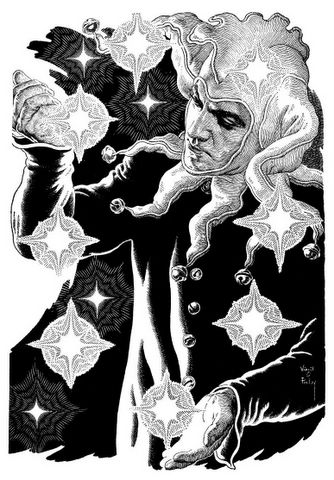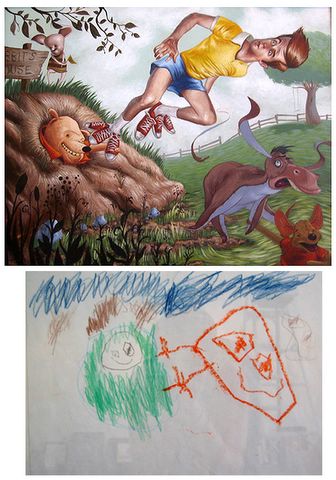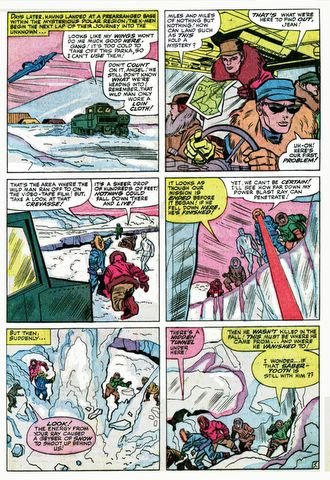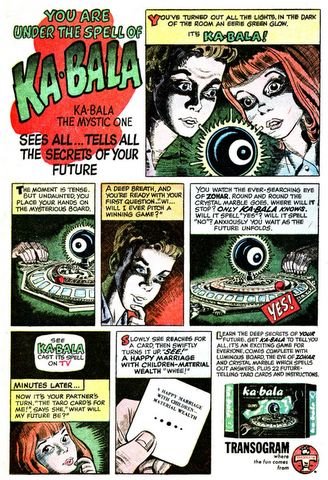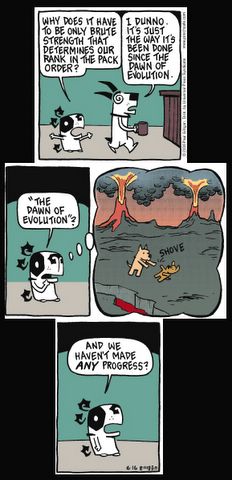Monday, June 26, 2006
Back To The Cretaceous
Friday, June 23, 2006
The Secret Origin of Spider Webs
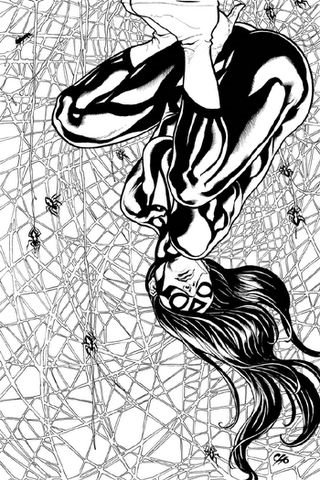
Art © Frank Cho. Spider Woman © Marvel Comics.
From over at the Palaeoblog.
And where exactly does the web come from?
Thursday, June 22, 2006
42n-1
How did the Universe begin? Many scientists would regard this as one of the most profound questions of all. But to Stephen Hawking, who has perhaps come closer than anyone to answering it, the question doesn't in fact even exist.Hawking and Thomas Hertog are about to publish a paper claiming that the Universe had no unique beginning. Instead, they argue, it began in just about every way imaginable (and maybe some that aren't).
That, they insist, is the only possible conclusion if we are to take quantum physics seriously. "Quantum mechanics forbids a single history," says Hertog.
Thomas Hertog and Hawking call their theory 'top-down' cosmology, because instead of looking for some fundamental set of initial physical laws under which our Universe unfolded, it starts 'at the top', with what we see today, and works backwards to see what the initial set of possibilities might have been. In effect, says Hertog, the present 'selects' the past.
Within just a few seconds after the Big Bang, a single history had already come to dominate the Universe, he explains. So from the 'classical' viewpoint of big objects such as stars and galaxies, things happened only one way after that point. Other 'histories', say, one in which the Earth formed only 4,000 years ago, have made no significant contribution to this cosmic evolution.
But in the first instants of the Big Bang, there existed a superposition of ever more different versions of the Universe, instead of a unique history. And most crucially, Hertog says that "our current Universe has features frozen in from this early quantum mixture". http://www.nature.com/news/2006/060619/full/060619-6.html
The Laws Have Changed
 +
+ 
"What you have already lost consider as totally lost"
Plucking our hero, the 5th century saint Simon Stylites, who preached from atop a pillar for 37 years, from the 1965 film, “Simon of the Desert” by Luis Buñuel, he ends up in an ersatz version of the Night Club scene in The Beatles “A Hard Day’s Night”, thanks to the seductive charms of the devil herself.

The video for The New Pornographers "The Laws Have Changed” (click for realplayer version) is subtitled with dialogue from the film. The band only shows up (I think) in the photo that the saint passes to the bartender. Dig the Hep Cat in the sunglasses straight outta "AHDN."
Images link and link
Winnie The Pooh
Wednesday, June 21, 2006
Father of Cryogenics Born This Day
Today In History: LPs Introduced
Columbia originated the term "LP" itself, which was copyrighted. Thus, although many other firms could make long-playing records, only Columbia could make an LP. Link
Tuesday, June 20, 2006
"Doomsday Vault" Built In Arctic
Norway is starting construction on a "doomsday vault" in the Arctic which is designed to house all known varieties of the world's crops.Dug into a frozen mountainside on the island of Svalbard, it is hoped the project will safeguard crop diversity in the event of a global catastrophe. More than 100 countries have backed the vault, which will store seeds, packaged in foil, at sub-zero temperatures.
Fenced in and guarded, with steel airlock doors, motion detectors and polar bears roaming outside - the concrete facility will, its backers say, be the most secure building of its type in the world.
The vault's purpose is to ensure survival of crop diversity in the event of plant epidemics, nuclear war, natural disasters or climate change; and to offer the world a chance to restart growth of food crops that may have been wiped out.
At temperatures of minus 18C (minus 0.4F), the seeds could last hundreds, even thousands, of years. Even if all cooling systems failed the temperature in the frozen mountain would never rise above freezing due to the permafrost on the mountainside.
The Global Crop Diversity Trust, founded in 2004, will help run the vault, which is planned to open and start accepting seeds from around the world in September 2007. The bank is eventually expected to house some three million seeds. Link
Monday, June 19, 2006
Enter: The Forbidden Dimsension!


Jackson Phibes recently reanimated 'The Forbidden Dimension' for a gig in Calgary & sent along the above photo proof to your Atomic Surgeon. I'll have to dust off the Time Bubble and go back and check it out.
Click HERE to be transported to the Forbidden Dimsension!
But are you brave enough to enter "The Scary Door?"
Sunday, June 18, 2006
Quantum Dots Count Single Electrons
Toshima Fujisawa and colleagues at NTT Basic Research Laboratories in Atsugi, Japan, created a circuit incorporating a two quantum dots - semiconducting crystals just a few nanometres in diameter - which only let a single electron pass through at a time. After switching the current on, they used another nanoscale device, called a quantum point contact, to measure the charge contained within each quantum dot. This revealed whether it contained an electron or not.
By taking measurements every 20 microseconds the researchers could count the flow of individual electrons as they passed through the quantum dots, and also determine the direction in which they were moving. Link
Saturday, June 17, 2006
Vampire Bats Recognize Prey’s Breathing
In a study two vampire bats were taught to associate recordings of different humans breathing with different cattle blood dispensers, providing food rewards. They were then played short clips of people breathing and had to associate them with the correct individual by going to the correct dispenser. Four human participants were asked to associate the same short clips with the correct individual.
The vampire bats were able to spontaneously associate the clips with the particular individuals, regardless of whether the individual was recorded breathing at rest or breathing while under physical strain. The human participants were also able to recognise some clips, but they were unable to recognise the clips of breathing recorded under physical strain.
Ref: Classification of human breathing sounds by the common vampire bat, Desmodus rotundus. 2006. L. Wiegrebe and U. Groeger. BMC Biology 2006 4: 18
Heat Vision and Jack
Friday, June 16, 2006
Arctic Scientists Investigate Alien-Like Glacier

Unusual sulfur springs on Ellesmere Island suggests how live may evolve on other planets
A scientific expedition to a remote glacier field in Canada's High Arctic may help researchers unlock the secrets about the beginning of life and provide insights for future exploration of our solar system.Scientists will study a sulfur-spewing spring on the surface of an ice field not far from the North Pole this summer. The geological oddity is home to a unique form of bacteria that has adapted to thrive in a cold and sulfur-rich environment.
"This is a very unusual feature on the earth's surface and it's an extreme ecosystem that could be a good model for how life first begins in a harsh environment."
The spring has also attracted the attention of the Canadian Space Agency and NASA, which are helping to fund the expedition, because it likely provides the best example on Earth for the conditions believed to exist on the surface of Jupiter's moon Europa. Ice-covered Europa is considered one of the best candidates for finding evidence of life on other planets within our solar system. Link

Pete Von Sholly's 'Space Thing'
The figure is conveniently small (approximately 4 1/2 inches), pre-painted, and easy to pop together with a great-looking, Aurora-inspired display box.
Available now HERE. ISBN: 1-59617-325-4
Thursday, June 15, 2006
Ben Franklin Discovers Electricity

On this day in 1752, Ben Franklin's kite-flying experiment proved lightning and electricity were related while flying a kite with a key attached. In Sept. 1752, he equipped his house with a lightning rod, connecting it to bells that ring when rod is electrified. He explained how to perform a kite experiment in the 19 Oct 1752 issue of the Pennsylvania Gazette.
In July 1750 he devised an experiment involving a sentry-box with a pointed rod on its roof, to be erected on hilltop or in church steeple, with rod attached to a Leyden jar which would collect the electrical charge, and thus prove lightning to be a form of electricity. Link
Wednesday, June 14, 2006
Univac 1 Goes On-Line This Day In 1951

Challengers of the Unknown © DC Comics

CLICK ALL IMAGES TO ENLARGE & READ




Oops... Looks like 'meeting mankind halfway' means getting a robo-lobotomy and being turned into a toaster!

Stephen Hawking Says: "The Stars Our Destination!"
"We won't find anywhere as nice as Earth unless we go to another star system," added Hawking. Hawking said that if humans can avoid killing themselves in the next 100 years, they should have space settlements that can continue without support from Earth.
"It is important for the human race to spread out into space for the survival of the species," Hawking said. "Life on Earth is at the ever-increasing risk of being wiped out by a disaster, such as sudden global warming, nuclear war, a genetically engineered virus or other dangers we have not yet thought of."
One of the best-known theoretical physicists of his generation, Hawking has done groundbreaking research on black holes and the origins of the universe, proposing that space and time have no beginning and no end.
However, Alan Guth, a physics professor at the Massachusetts Institute of Technology, said Hawking's latest observations were something of a departure from his usual research and more applicable to survival over the long-term.
"It is a new area for him to look at," Guth said. "If he's talking about the next 100 years and beyond, it does make sense to think about space as the ultimate lifeboat." Link
Tuesday, June 13, 2006
Can - Tago Mago

Can - Tago Mago Spoon - Music - Gema LC 7395
Holger Czukay/bass; Michael Karoli/guitar; Jaki Liebezeit/drums; Irmin Schmidt/keyboards; Damo Suzuki/vocals
“Can formed in 1968, featuring two former students of avant-garde classical composer Karlheinz Stockhausen, a former free-jazz drummer interested in math, a rock'n'roll guitarist 10 years younger than the others, and an American sculptor living in Europe in order to evade the draft. Keyboardist Irmin Schmidt had visited America in 1966, hooking up with the Fluxus musicians (Terry Riley, La Monte Young, et al.) and becoming inspired to form a rock band. He and bassist Holger Czukay (who would issue 1969's Canaxis, which used primitive sampling technology) were keen to incorporate experimental composition and compositional theories into a rock setting, and when Czukay's student Michael Karoli turned them onto Jimi Hendrix and the Beatles, the band's fate was sealed.”
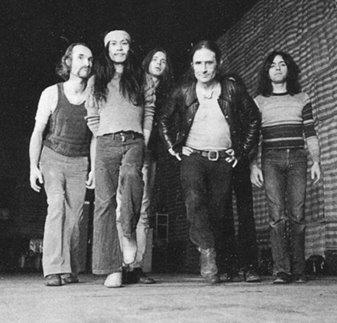
Can in 1972: Holger Czukay, Damo Suzuki, Michael Karoli, Irmin Schmidt, Jaki Liebezeit. Link
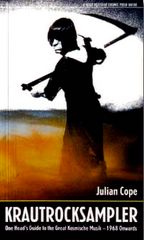 "Aumgn" and "Peking O" are the most experimental tracks in the Can catalog, sharing more in common with the irreverent electronic music of Stockhausen or Pierre Henry than most anything related to rock-- Ummagumma was a possible exception. Of course, when the epic "Halleluwah" starts with Liebezeit's industrial strength funk pattern before winding through dark, echo-chamber ambience and minimalist drone (while never letting you forget those drums), the detours seem a lot less harrowing. The shorter songs, like the gray, faintly ominous "Paperhouse" or the flawless funk and dark impressionism on "Mushroom", are merely smaller pieces of the band's most exotic pie.” Info from Pitchfork.com and The Freak Zone.
"Aumgn" and "Peking O" are the most experimental tracks in the Can catalog, sharing more in common with the irreverent electronic music of Stockhausen or Pierre Henry than most anything related to rock-- Ummagumma was a possible exception. Of course, when the epic "Halleluwah" starts with Liebezeit's industrial strength funk pattern before winding through dark, echo-chamber ambience and minimalist drone (while never letting you forget those drums), the detours seem a lot less harrowing. The shorter songs, like the gray, faintly ominous "Paperhouse" or the flawless funk and dark impressionism on "Mushroom", are merely smaller pieces of the band's most exotic pie.” Info from Pitchfork.com and The Freak Zone.This week Stuart Maconie’s Freak Zone on BBC 6 presented a 3 hour show on ‘Krautrock’ (or Kosmische Musik if you prefer) and featured an hour with Julian Cope (author of the excellent and highly recommended ‘Krautrocksampler’). Tago Mago by Can was the featured LP, but Faust, Tangerine Dream, Popol Vuh, La Dusseldof, and Eloy all put in appearance, as did a few surprises.
You can still listen to the show for the rest of this week HERE.
Brian Eno made this odd little 60 sec. video to honour Can:
Mad Monster Party(?)
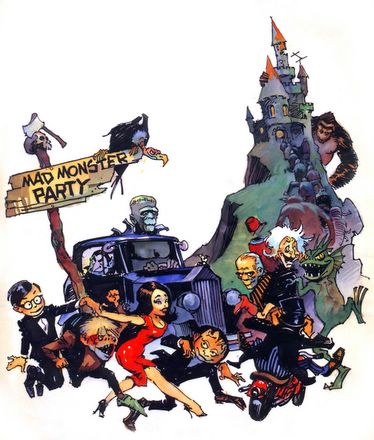
Frank Frazetta poster Link
"It seems that venerable Dr. Frankenstein (Karloff) has decided to hang up his mad-scientist frock after reaching the pinnacle of his profession: a potion that causes "complete destruction" in a suspiciously nuclear cloud of smoke. Hoping to choose a successor among his Universal Classics brethren, Dr. Frankenstein invites Dracula, the Wolfman, the Hunchback of Notre Dame, the Mummy, the Invisible Man, Dr. Jekyll, the Creature from the Black Lagoon, and his own stable of Igor, Frankenstein's Monster, and some red-headed bombshell [Francesca-above] who does a nice tango with Drac, to Evil Island and the eponymous party."
Quotes from Walter Chaw @ Flim Freak Central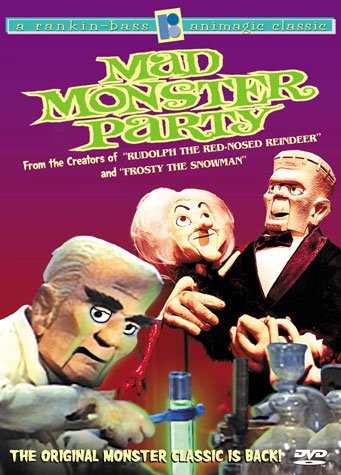
Cannibal Polar Bears
Polar bears kill each other for population regulation, dominance, and reproductive advantage, the study said. Killing for food seems to be less common, said the study's principal author, Steven Amstrup of the U.S. Geological Survey Alaska Science Center.
"During 24 years of research on polar bears in the southern Beaufort Sea region of northern Alaska and 34 years in northwestern Canada, we have not seen other incidents of polar bears stalking, killing, and eating other polar bears,'' said the study's principal author, Steven Amstrup of the U.S. Geological Survey Alaska Science Center.
Researchers discovered the first kill in January 2004. A male bear had pounced on a den, killed a female and dragged it 245 feet away, where it ate part of the carcass. Females are about half the size of males. . Link from LiveScience.com
Monday, June 12, 2006
Savoure Le Rouge


If Jean- Pierre Jeunet’s (Aliens3, Le Fabuleux Destin d'Amélie Poulain) city in the film ‘La Cité des Enfants Perdus’ (The City of Lost Children – 1995) had a music video channel this song, ‘Savoure Le Rouge’ by Indochine, would be in heavy rotation:



